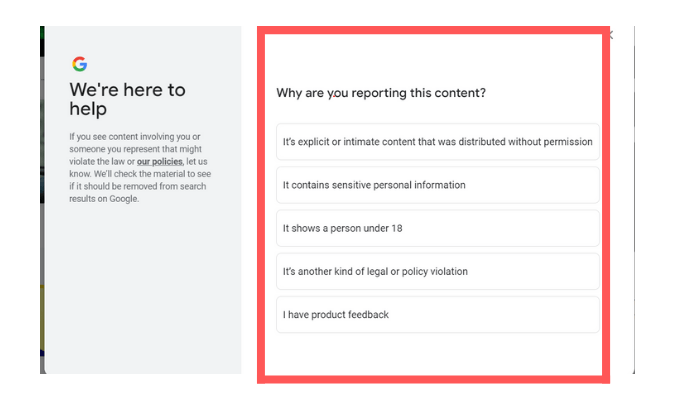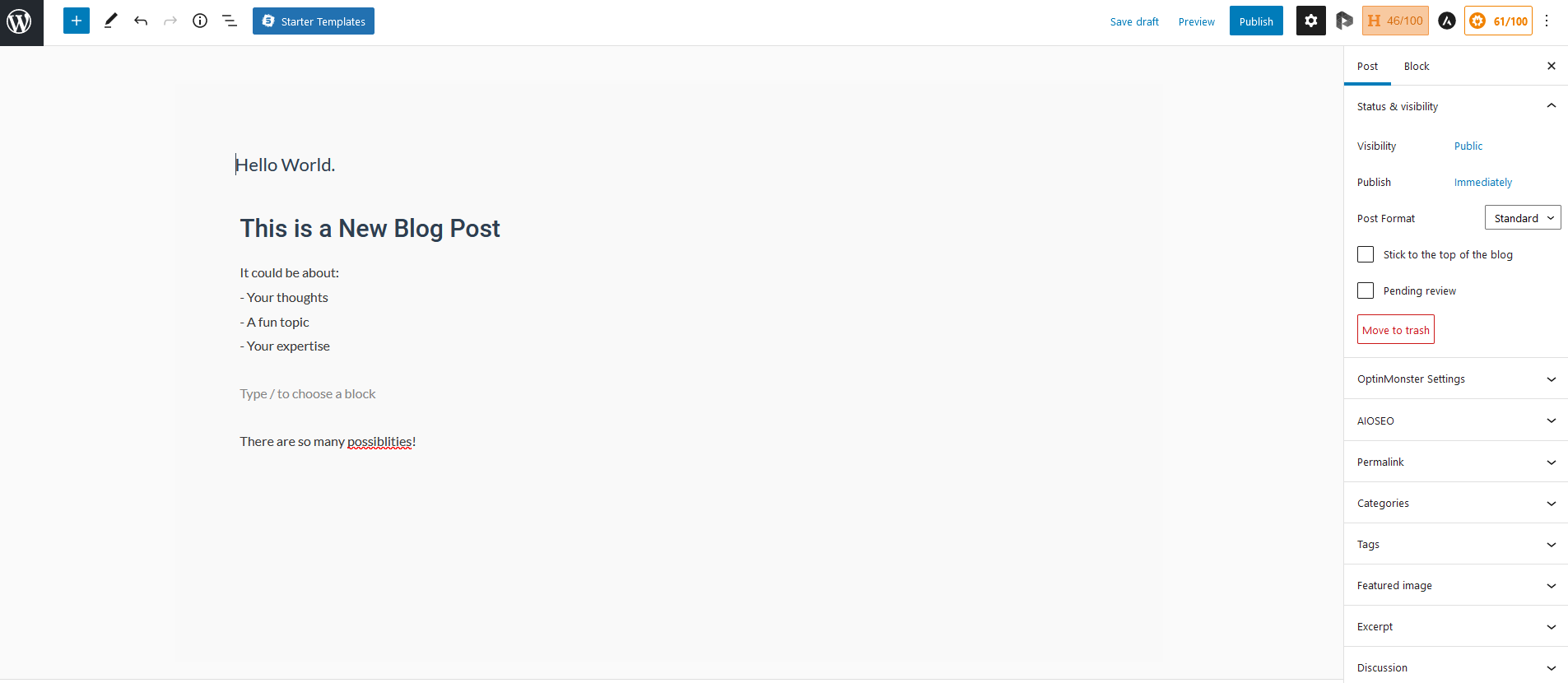When you want to improve your website’s search results, you need to start with high-quality content. After all, search engines reward trustworthy websites, and your website earns trustworthiness by showing authority on a particular subject. But hand in hand with creating great content, you can establish authority by earning backlinks.
Backlinks are references that other websites make to your website through a clickable link. These links don’t often show up on their own, though, so it’s important to be proactive in building them yourself. Semrush is our favorite tool for building links, as it helps you find websites willing to create backlinks for you. Obtaining backlinks isn’t easy, but Semrush helps you focus your efforts.
Crazy Egg’s Favorite Tools to Get Backlinks
When you use the best link-building tools to help you get backlinks, you save time. Rather than randomly sending backlink requests in a scattershot style to hundreds of websites, these tools give you a plan to follow for a better chance at success.
Semrush helps you track down the backlink strategies your competitors’ websites are using, which shows you gaps in your backlink strategy as well as potential sites that may be willing to give you backlinks. You can try Semrush’s five tools related to backlinks for free.
With Ahrefs, you have the ability to reverse engineer the ways your competitors are generating backlinks, giving you some ideas for targeting your own backlinks. When you pay for a full-year subscription to Ahrefs, you receive two months for free.
If you have an area of expertise that you showcase on your website, HARO helps you let members of the media know about it, so you can serve as an expert for a news story, receiving a backlink in the process. You can sign up to become a source at HARO for free.
More Top Tools for Getting Backlinks
Because backlinks are so important to the success of your website, you want to have a great plan in place for obtaining them. Consequently, finding a backlink software tool that perfectly matches your strengths is a good idea. If you need an option other than those we discussed already, we created detailed reviews of each of the best link-building tools for you to consider.
Step 1 – Get Started With Semrush

When you want to start using Semrush to help obtain and manage your backlinks, you can subscribe to any pricing tiers. All three subscription levels offer backlink analytics and other tools for trying to get backlinks. You can try either of the lower-priced tiers for free.
On the Semrush pricing page, just click Try for Free or Subscribe to start the process. If you decide to sign up for the free trial, you will receive up to 10 free backlink requests. If you want to continue using the tool, you have to pay for a subscription.
When you sign up for a Semrush account, you receive numerous tools in addition to backlink tracking, including:
- Keyword tracking
- Keyword analytics reports
- Keyword project management
- Analysis of competitors’ websites
- Social media tools for site management
- Content management tools
- Website audit tools
- Local SEO management
A few of these tools are only available in upper pricing tiers or for an add-on cost, but most of them are included in the basic tier.
Step 2 – Explore Semrush’s Backlink Tools

Semrush offers several different tools aimed at helping you generate and manage your strategies with backlinks. We’ll introduce Semrush’s various backlink tools in this step before explaining how to use each one in more detail in the following steps.
- Backlink Gap: With Backlink Gap, Semrush finds areas where your site is missing out on potential opportunities to obtain backlinks by measuring your competitors’ work.
- Backlink Analytics: The Semrush Backlink Analytics tool allows you to find and track any backlinks your website is receiving. If you have broken backlinks, this tool can help you try to repair them.
- Backlink Audit: This tool constantly measures the quality of your website’s backlinks, ensuring they are helping you in terms of generating authority rather than harming you.
- Bulk Backlink Analysis: Semrush uses this tool to help you build a database of prospects for obtaining backlinks.
- Link Building: Use this tool to manage and create outreach campaigns for seeking backlinks. This tool helps to automate many aspects of running the campaigns.
We’ll list each of these tools in order of importance for the majority of websites in the following steps. However, you may want to skip some steps or use them in a different order, depending on the most pressing needs for your website.
Step 3 – Start With the Semrush Backlink Gap Tool

You can try the Backlink Gap tool in Semrush after you sign up for the free trial. From the Backlink Gap page, enter your domain name in the top text box. You can then enter up to four competitor domain names in the subsequent text boxes. (If you need clarification on which sites qualify as your competitors, just double-click inside one of the text boxes. Semrush then displays a list of competitor sites.)
After you click Find Prospects, Semrush compares your site’s performance to your competitors’ backlinks. Through this comparison, Semrush generates a list of backlink opportunities you can try to use.
For example, if your competitors are receiving backlinks from a certain set of websites, you may be able to request backlinks from those same websites. Semrush simplifies the process of finding those other websites, giving you more opportunities to request backlinks. Semrush allows you to export the data it discovered to a spreadsheet if desired.
As Semrush builds the list of domains from which you may want to seek backlinks, it also ranks them. Those with better rankings have a higher trustworthiness score, which makes the backlinks from those sites more valuable. Search engines give more credence to backlinks that come from highly trusted sites that speak to the subject matter with authority.
Step 4 – Use the Semrush Backlink Analytics Tool

As we mentioned in the previous step, obtaining just any backlink is not enough to help your website’s performance in search results. You need high-quality backlinks. If the search engines determine that your backlinks are coming from spammy websites that do not carry authority on the topic, the search engine may actually punish your ranking.
From the Semrush Backlink Analytics tool page, you can enter your domain name in the text box at the top of the page. You can use this tool in a limited manner for free. Click Analyze to see a collection of statistics about your site’s backlinks. You’ll also see an authority score, so you can determine if you are receiving the quality of backlinks you need to improve your search results.
For example, the Semrush Backlink Analytics tool is especially strong at helping you measure your backlinks for niches within your website’s primary target area. You may find that trying to obtain backlinks for this niche area is easier than seeking backlinks for general topics, where dozens of websites are seeking backlinks.
Additionally, this tool can measure the percentage of your backlinks that are coming from foreign websites if that is important to you. Depending on the topic your website focuses on, you may want to try to increase the number of foreign visitors you have. You can use Semrush’s information to compare your strategy regarding foreign site visitors to what your competitors are doing.
You can later enter websites for your competitors in the Backlink Analytics tool. Compare their statistics to your statistics to help you determine areas where you could change your backlink strategy.
Step 5 – Use the Semrush Backlink Audit Tool

When running the Backlink Audit tool from Semrush, which you can try for free, start at the Backlink Audit page. Enter your domain name in the text box at the top of the page and click Start Backlink Audit.
You then can determine how you would like to run the audit process in the popup window. Most people will want to accept the pre-completed choices on each screen in the window. Finally, click Start Backlink Audit to run the audit. It may take several minutes to run the audit if you have a large website with numerous backlinks.
The audit creates a list of any broken backlinks on your site. You then can reach out to the owner of the domain with the broken backlink and suggest a fix. Fixing broken backlinks both benefits your website and the referring website, so the domain’s owner should be willing to fix the issue.
The audit shows you the exact pages on your website that are generating the highest number of backlinks. This is helpful, as you may want to create content that has a similar topic to this page, potentially leading to more backlinks. You can mimic the structure of this page, as it already has shown a high level of success.
The audit includes a list of referring sites and the number of backlinks they are giving you. As long as these sites have a strong authority ranking, you may want to seek even more backlinks from these sites.
Should you find that a poor-quality site is giving you a lot of backlinks, you may want to ask the site’s owner to remove your backlink. This action may improve your authority ranking among search engines. You also can collect a list of the backlinks you want to remove and send them to Google Disavow. This will request that Google ignore those backlinks that potentially are harming your authority score.
Step 6 – Use the Semrush Bulk Backlink Analysis Tool

From the Bulk Backlink Analysis page on Semrush, you can analyze your competitors’ websites. These results can help you find link-building opportunities that your competitors are currently using.
You can make use of this tool for free when testing Semrush. From the Bulk Backlink Analysis page, you can enter up to 200 domain names for your competitors in the text box. (You can enter fewer names if desired.) Click Compare. Through this analysis, you can see information for your competitors like:
- Authority score
- Number of backlinks
- Number of domains creating backlinks
- Monthly visits
- Types of backlinks (text or image, for example)
Ultimately, the analysis gives you a big-picture idea of how websites related to your primary topic are performing. You can figure out patterns for the types of backlinks frequently occurring with your competitors related to this topic.
Depending on how deep you want to dig into these results, you can try to reverse engineer and figure out the strategies the most successful competitor websites are using. You may be able to determine which mistakes certain competitor websites are making in their strategies as they struggle to obtain high-quality backlinks.
This analysis tool is a good way to perform some research into a content area you are considering for a startup website. You can peek at the performance of potential competitors in this area. Try spotting some areas where the competitors are struggling with generating backlinks, giving you an opening to jump into the market successfully.
Step 7 – Use the Semrush Link Building Tool

Finally, once you have developed the strategies you would like to use to create backlinks, you are ready to use the Semrush Link Building Tool. This tool helps you put together a list of potential backlink opportunities based on your research to this point. This tool collects the contact information for the domains where you may want to try to obtain backlinks.
From the Link Building Tool page, enter your domain in the text box at the top of the page and click Start Link Building. In the popup window, enter any keywords you want to target for trying to build backlinks. On the next screen, enter the competitors from which you want to source. (Semrush may prefill some of the competitors’ domains for you.) Click Start Link Building.
In the results, you’ll see a list of domain prospects from which you may want to seek backlinks. You’ll see the type of webpage that is generating the backlink and the trustworthiness ranking of the website from which the page is originating.
When you are looking at hundreds or thousands of results, it may feel overwhelming to try to decide which ones to target. With Semrush, though, you can reduce the number of results as you’re researching them.
Through your research, if you would like to save a particular domain to your list of potential prospects, click the To In Progress button. Semrush then saves those domains that are of the greatest level of interest to you on your personalized list. When you are ready to begin making requests for backlinks, just access your list. Semrush can automate some aspects of requesting backlinks, saving time.
As you make requests, this tool tracks your success in obtaining backlinks from the domains on your list. This information can help you figure out the best way to spend your time when trying to obtain backlinks.















